HANDS-ON: The Vacheron Constantin Traditionnelle Twin Beat Perpetual Calendar explained
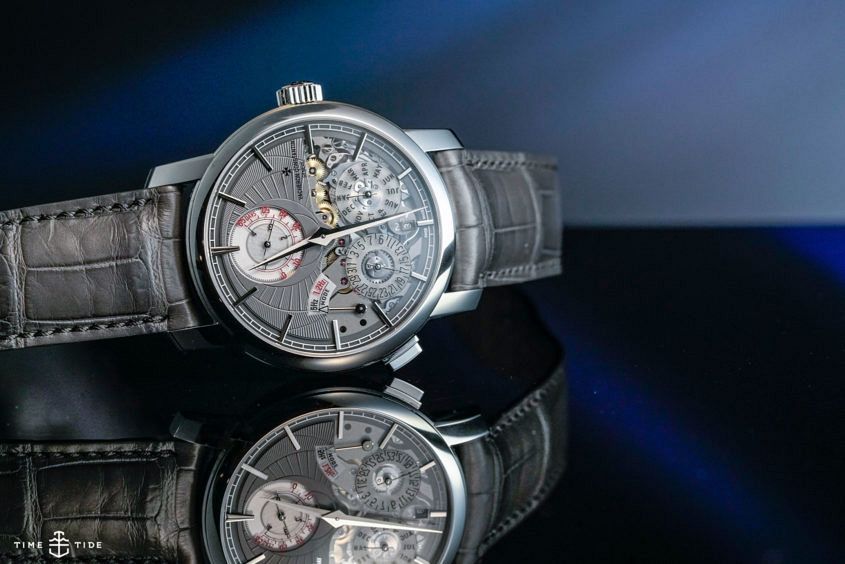 To understand the Vacheron Constantin Twin Beat, we need to begin with a universal truth: in most areas of life, the most meaningful innovations are those that address real-life needs, solving practical problems in a sensible way. And those solutions come through questioning orthodox assumptions. In the case of mechanical watches, the received wisdom is that the running time of a watch before it needs rewinding (its power reserve) is fixed by the amount of energy the mainspring can store. In other words, the mainspring barrel has a fixed capacity and thus can release energy only for a fixed timespan. Therefore, a longer power reserve requires either a longer mainspring (much larger barrel) or multiple mainsprings that release their energy one by one (multiple, series-coupled barrels). Both of these conventional solutions require more space in the movement and, consequently, a bigger watch case. It’s like the range of a car: have a bigger tank or build in some energy-saving technology. Now, for time-only automatic watches this limitation of power reserve is not a huge issue, since even a very slim case can accommodate enough mainspring to provide 60 hours of running time (and those who really do find it an…
To understand the Vacheron Constantin Twin Beat, we need to begin with a universal truth: in most areas of life, the most meaningful innovations are those that address real-life needs, solving practical problems in a sensible way. And those solutions come through questioning orthodox assumptions. In the case of mechanical watches, the received wisdom is that the running time of a watch before it needs rewinding (its power reserve) is fixed by the amount of energy the mainspring can store. In other words, the mainspring barrel has a fixed capacity and thus can release energy only for a fixed timespan. Therefore, a longer power reserve requires either a longer mainspring (much larger barrel) or multiple mainsprings that release their energy one by one (multiple, series-coupled barrels). Both of these conventional solutions require more space in the movement and, consequently, a bigger watch case. It’s like the range of a car: have a bigger tank or build in some energy-saving technology. Now, for time-only automatic watches this limitation of power reserve is not a huge issue, since even a very slim case can accommodate enough mainspring to provide 60 hours of running time (and those who really do find it an…
The post HANDS-ON: The Vacheron Constantin Traditionnelle Twin Beat Perpetual Calendar explained appeared first on Time and Tide Watches.
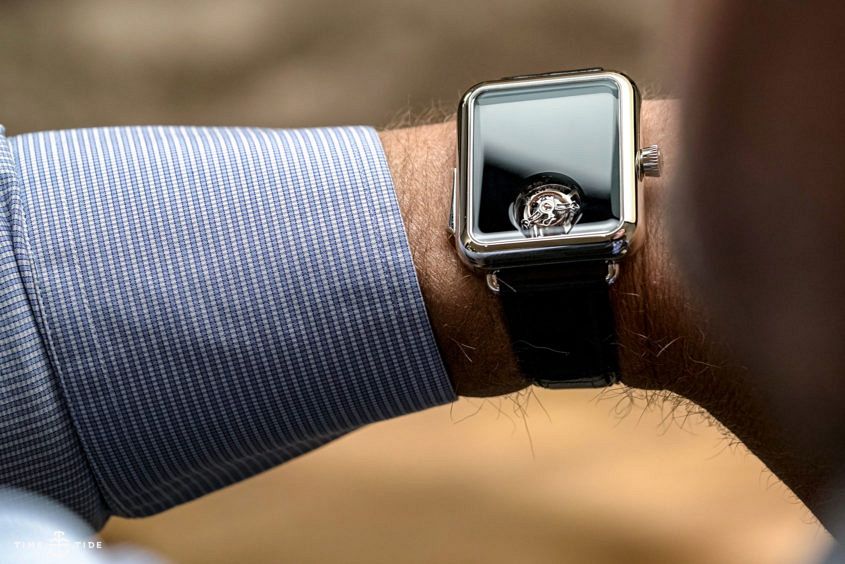 Visiting the team at H. Moser & Cie. is always one of the highlights of SIHH. You never quite know what you’re going to get. Well, that’s not quite true. You know you’re going to be in for some surprises. And seeing Moser at SIHH 2019 did not disappoint. We knew about the Nature Watch, and that statement piece (literally, it was all about the statement of the watch industry’s environmental obligations) did not disappoint in real life (again, literally). Another high-level statement that impressed in real life was the exceptionally minimal Swiss Alp Concept Black — I just shudder to think about setting the time. Really, though, the watches that excited me were the more commercially oriented pieces, like the Pioneer with its ruggedised take on the tourbillon, and the (as always) exceptional dial on the Endeavour Centre Seconds Concept Blue Lagoon, which certainly lives up to its name.
Visiting the team at H. Moser & Cie. is always one of the highlights of SIHH. You never quite know what you’re going to get. Well, that’s not quite true. You know you’re going to be in for some surprises. And seeing Moser at SIHH 2019 did not disappoint. We knew about the Nature Watch, and that statement piece (literally, it was all about the statement of the watch industry’s environmental obligations) did not disappoint in real life (again, literally). Another high-level statement that impressed in real life was the exceptionally minimal Swiss Alp Concept Black — I just shudder to think about setting the time. Really, though, the watches that excited me were the more commercially oriented pieces, like the Pioneer with its ruggedised take on the tourbillon, and the (as always) exceptional dial on the Endeavour Centre Seconds Concept Blue Lagoon, which certainly lives up to its name. 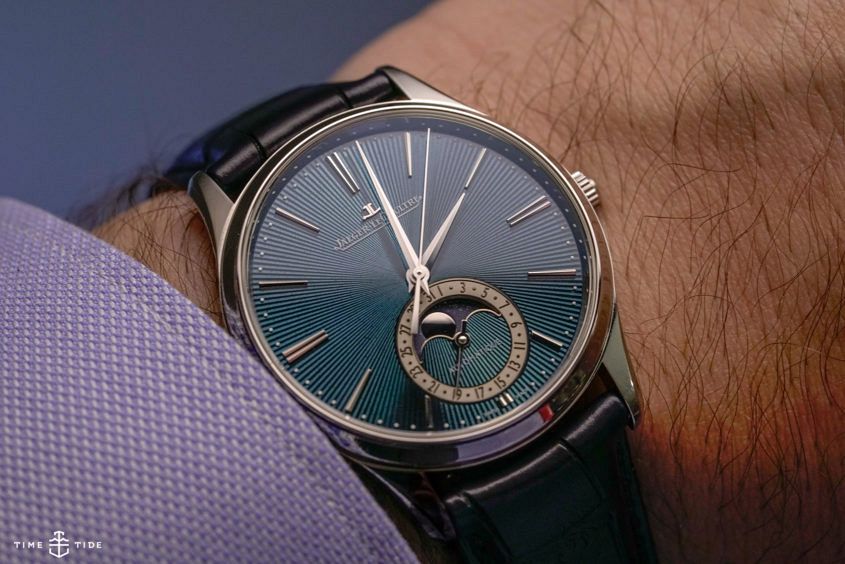 With the new Master Ultra Thin Moon Enamel, Jaeger-LeCoultre has pulled off quite a feat: it has transformed a quietly beautiful and discreetly elegant design into a take-your-breath-away showstopper. And it has done so without losing even a milligram of the class and refinement that has defined the model since it was first introduced in 2012. While JLC has added a variety of dial colours and finishes to the collection over the years, this new dial takes it to another level, showcasing the Maison’s mastery of guillochage, enamelling and engraving. It’s unlike any guilloché-enamel dial I’ve seen before. (The technique of applying coloured, translucent enamel over guilloché engraving is called flinqué – or, in Japan, Shippo.) Usually, when these two crafts are combined, the engraving is delicate and reveals itself fully only when the light hits the dial at certain angles. But here, the sunray pattern is highly pronounced, with the ‘rays’ cut extra-deep and wide, so they appear almost faceted and make the dial dance and sparkle in the light as you move your wrist. The vivid colour of the enamel adds even more impact. Oddly, Jaeger-LeCoultre describes it as “a deep, intense midnight blue”, which is well off…
With the new Master Ultra Thin Moon Enamel, Jaeger-LeCoultre has pulled off quite a feat: it has transformed a quietly beautiful and discreetly elegant design into a take-your-breath-away showstopper. And it has done so without losing even a milligram of the class and refinement that has defined the model since it was first introduced in 2012. While JLC has added a variety of dial colours and finishes to the collection over the years, this new dial takes it to another level, showcasing the Maison’s mastery of guillochage, enamelling and engraving. It’s unlike any guilloché-enamel dial I’ve seen before. (The technique of applying coloured, translucent enamel over guilloché engraving is called flinqué – or, in Japan, Shippo.) Usually, when these two crafts are combined, the engraving is delicate and reveals itself fully only when the light hits the dial at certain angles. But here, the sunray pattern is highly pronounced, with the ‘rays’ cut extra-deep and wide, so they appear almost faceted and make the dial dance and sparkle in the light as you move your wrist. The vivid colour of the enamel adds even more impact. Oddly, Jaeger-LeCoultre describes it as “a deep, intense midnight blue”, which is well off… When it comes to Vacheron Constantin’s SIHH releases, there’s no doubt the pieces that were the talk of the town (and rightfully so) were the epic Twin Beat and the slightly less epic but epically attractive Overseas Tourbillon. And I get it, they’re both great watches. The Twin Beat is a triumph of clever engineering and the Overseas Tourbillon is downright gorgeous. But the heart wants what the heart wants. And the Vacheron Constantin my heart wanted wasn’t really a new watch at all. But, instead, an existing piece on a new bracelet. And, boy, what a difference a bracelet can make. But before we get to that, a quick recap on the Vacheron Constantin Overseas Perpetual Calendar Ultra-Thin. It was released last year on blue rubber and leather, and looks great. It had that sporty-with-a-very-healthy-dose-of-luxe Overseas look, which is dialled up to 11 in its 41.5mm pink gold case. And then there’s the opaline dial in a classic perpetual calendar configuration, all powered by the mighty 1120 QP/1. So the watch is already a heavy hitter, merely by virtue of being a gold perpetual calendar from one of the greatest houses. But, add to that a truly epic pink…
When it comes to Vacheron Constantin’s SIHH releases, there’s no doubt the pieces that were the talk of the town (and rightfully so) were the epic Twin Beat and the slightly less epic but epically attractive Overseas Tourbillon. And I get it, they’re both great watches. The Twin Beat is a triumph of clever engineering and the Overseas Tourbillon is downright gorgeous. But the heart wants what the heart wants. And the Vacheron Constantin my heart wanted wasn’t really a new watch at all. But, instead, an existing piece on a new bracelet. And, boy, what a difference a bracelet can make. But before we get to that, a quick recap on the Vacheron Constantin Overseas Perpetual Calendar Ultra-Thin. It was released last year on blue rubber and leather, and looks great. It had that sporty-with-a-very-healthy-dose-of-luxe Overseas look, which is dialled up to 11 in its 41.5mm pink gold case. And then there’s the opaline dial in a classic perpetual calendar configuration, all powered by the mighty 1120 QP/1. So the watch is already a heavy hitter, merely by virtue of being a gold perpetual calendar from one of the greatest houses. But, add to that a truly epic pink…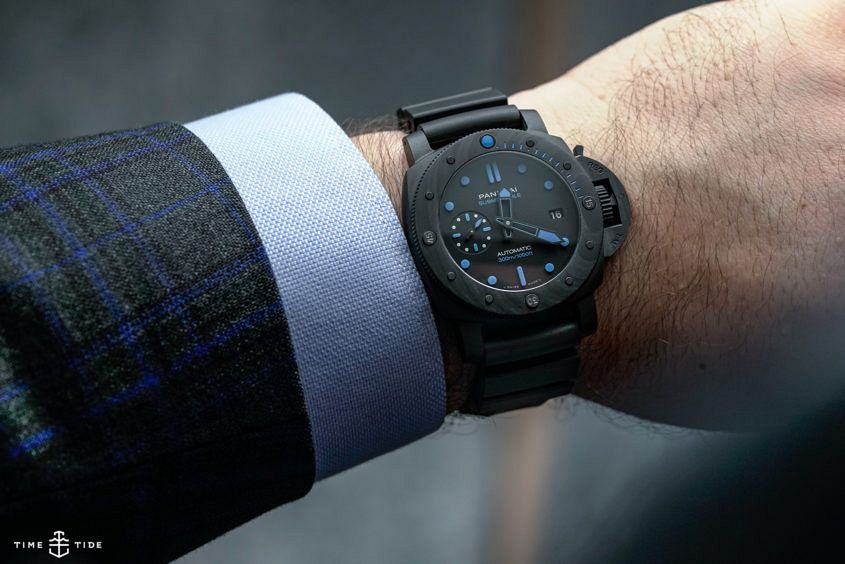 If you had any doubts about Panerai’s position as kings of the deep, their SIHH 2019 release catalogue would have dispelled them. Panerai’s hero watch is, of course, the Submersible. It’s one of the brand’s most interesting designs, as it honours their historically important case shape (cushiony, with a fairly famous crown guard), while adding a very handy bezel and some more contemporary lines. This year sees Panerai tweak a few more details, playing more with smaller sizes and interesting case materials. Here are our top picks. Panerai Submersible Carbotech 42mm – PAM00960 Carbotech is, without a doubt, a cool material, and you know what, it’s still just as cool in a smaller 42mm case. Panerai Submersible 42mm – PAM00959 This is a more classical Panerai execution, with its steel case. But even here there’s something quite special — the pebbly, grainy grey dial that somehow reminds me of shark skin. Panerai Submersible BMG-Tech 47mm – PAM00799 Just quietly, this might be my pick of the bunch. It’s big, and it’s also very complex. Not only is the bezel Carbotech, but the case is made from Panerai’s fancy BMG-Tech material. And that makes for a pretty awesome combo.
If you had any doubts about Panerai’s position as kings of the deep, their SIHH 2019 release catalogue would have dispelled them. Panerai’s hero watch is, of course, the Submersible. It’s one of the brand’s most interesting designs, as it honours their historically important case shape (cushiony, with a fairly famous crown guard), while adding a very handy bezel and some more contemporary lines. This year sees Panerai tweak a few more details, playing more with smaller sizes and interesting case materials. Here are our top picks. Panerai Submersible Carbotech 42mm – PAM00960 Carbotech is, without a doubt, a cool material, and you know what, it’s still just as cool in a smaller 42mm case. Panerai Submersible 42mm – PAM00959 This is a more classical Panerai execution, with its steel case. But even here there’s something quite special — the pebbly, grainy grey dial that somehow reminds me of shark skin. Panerai Submersible BMG-Tech 47mm – PAM00799 Just quietly, this might be my pick of the bunch. It’s big, and it’s also very complex. Not only is the bezel Carbotech, but the case is made from Panerai’s fancy BMG-Tech material. And that makes for a pretty awesome combo.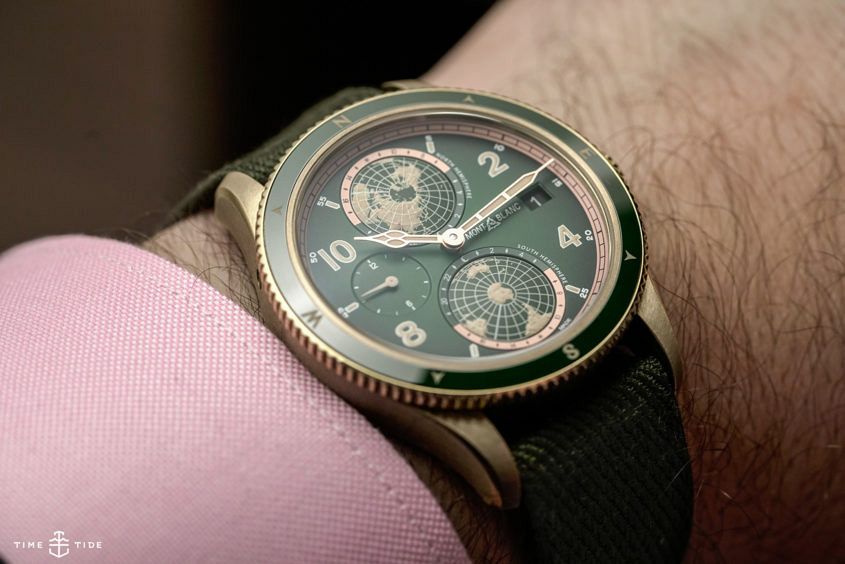 Since Davide Cerrato took the gig as Montblanc’s top watch guy, the brand’s timepiece offerings have been steadily ramping up, becoming more focused and more appealing. To my mind, Montblanc’s SIHH 2019 saw the brand in high gear, on the inside track and with the intensity of a winner. Two hero collections and a range of watches to appeal to a wide range of tastes. Here are our five picks. Montblanc 1858 Geosphere LE Last year’s complicated two timer was already a good-looking beast of a watch, and this year the Geosphere’s gone green, making it even more Hulk-like. Montblanc 1858 Chronograph While it might not have the same incredible engine as its Minerva brethren, the 1858 Chronograph, with its bronze case and mossy green dial, is one undeniably attractive piece of kit. Montblanc Heritage Automatic While the 1858 family was all about the green, the freshly minted Heritage line is looking dapper with its copper-y salmon colourways. Add to that the complex dial construction and you’ve got a winning proposition on your hands. Montblanc Heritage Perpetual Calendar Montblanc’s meteoric re-emergence into serious watchmaking was its aggressively priced QP. Since then, it’s become a staple of the collection, and this…
Since Davide Cerrato took the gig as Montblanc’s top watch guy, the brand’s timepiece offerings have been steadily ramping up, becoming more focused and more appealing. To my mind, Montblanc’s SIHH 2019 saw the brand in high gear, on the inside track and with the intensity of a winner. Two hero collections and a range of watches to appeal to a wide range of tastes. Here are our five picks. Montblanc 1858 Geosphere LE Last year’s complicated two timer was already a good-looking beast of a watch, and this year the Geosphere’s gone green, making it even more Hulk-like. Montblanc 1858 Chronograph While it might not have the same incredible engine as its Minerva brethren, the 1858 Chronograph, with its bronze case and mossy green dial, is one undeniably attractive piece of kit. Montblanc Heritage Automatic While the 1858 family was all about the green, the freshly minted Heritage line is looking dapper with its copper-y salmon colourways. Add to that the complex dial construction and you’ve got a winning proposition on your hands. Montblanc Heritage Perpetual Calendar Montblanc’s meteoric re-emergence into serious watchmaking was its aggressively priced QP. Since then, it’s become a staple of the collection, and this…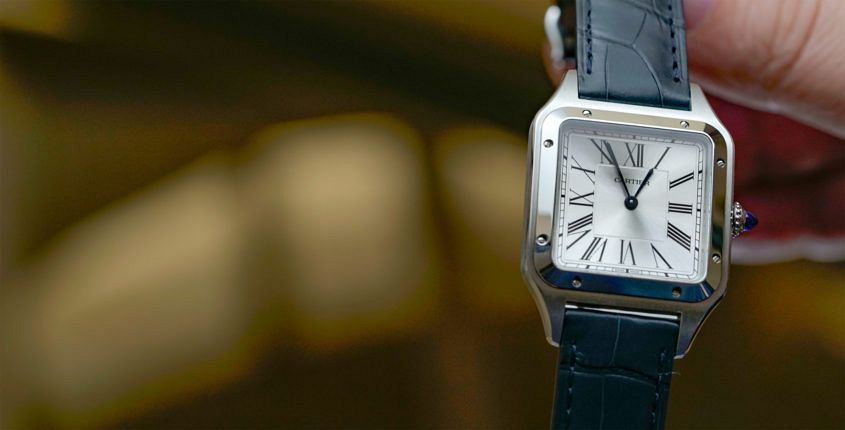 Over the last few years, Cartier’s watch releases have been consistently impressive, alternating between savvily commercial and outrageously stunning. This year we saw that strong trend continue. Cartier Santos de Cartier Chronograph The big news was the addition of a chronograph to last year’s wildly popular new Santos. In addition to complication, this model adds some not insignificant bulk. Cartier Tonneau Deceptively simple and unerringly elegant, this quartz-powered Tonneau is a real looker, and as someone with a fairly large wrist, I was surprised how good it looked on me. Cartier Tonneau Dual Time Skeleton This watch is a classic case of why you need to see real-life pictures of a watch (or even better, the actual watch). When I saw the press release renders I was a little underwhelmed. In real life? I was blown away. Cartier Santos-Dumont This simple, slender quartz watch was one of the most pleasant surprises of SIHH, eminently wearable and Cartier design at its most pure. Cartier Santos de Cartier Skeleton If you’ve ever wanted proof that Cartier is interested in growing its fanbase, this is the watch. On the one hand, it’s classic Cartier — the skeletonised Santos has been a staple for…
Over the last few years, Cartier’s watch releases have been consistently impressive, alternating between savvily commercial and outrageously stunning. This year we saw that strong trend continue. Cartier Santos de Cartier Chronograph The big news was the addition of a chronograph to last year’s wildly popular new Santos. In addition to complication, this model adds some not insignificant bulk. Cartier Tonneau Deceptively simple and unerringly elegant, this quartz-powered Tonneau is a real looker, and as someone with a fairly large wrist, I was surprised how good it looked on me. Cartier Tonneau Dual Time Skeleton This watch is a classic case of why you need to see real-life pictures of a watch (or even better, the actual watch). When I saw the press release renders I was a little underwhelmed. In real life? I was blown away. Cartier Santos-Dumont This simple, slender quartz watch was one of the most pleasant surprises of SIHH, eminently wearable and Cartier design at its most pure. Cartier Santos de Cartier Skeleton If you’ve ever wanted proof that Cartier is interested in growing its fanbase, this is the watch. On the one hand, it’s classic Cartier — the skeletonised Santos has been a staple for…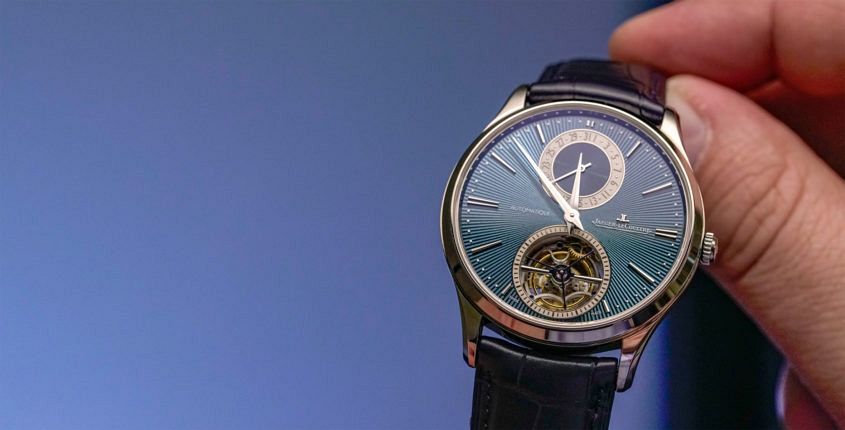 The talk of the Jaeger-LeCoultre booth at SIHH was the incredible (and incredibly well-sized) Master Grande Tradition Gyrotourbillon Westminster Perpétuel, but that rare bird was in hot demand, so we didn’t manage any quality one-on-one time with it. But that’s OK really, as there were numerous other exquisitely finished offerings on hand, from the Reverso and Master families. Jaeger-LeCoultre Master Ultra Thin Moon Enamel This watch and the two other Master Thins take several design cues from the grand daddy Gyrotourbillon, but in a package that’s in the realm of mortals. The dials are a rich and complex blue guilloché, and the movements in these three pieces have been revamped and improved. Jaeger-LeCoultre Master Ultra Thin Perpetual Enamel Building on the same formula as above, this watch offers a significantly more complex perpetual calendar. Bonus points for a design that manages to balance complexity and beauty. Jaeger-LeCoultre Master Ultra Thin Tourbillon Enamel JLC’s expertise with tourbillon is legendary, something that’s apparent to anyone gazing at that well at six. Gorgeous. Jaeger-LeCoultre Reverso Tribute Small Seconds Changing gears to the iconic Reverso, JLC offered a few snappy dial and case variations this year, including this rich and full-bodied Tribute Small Seconds…
The talk of the Jaeger-LeCoultre booth at SIHH was the incredible (and incredibly well-sized) Master Grande Tradition Gyrotourbillon Westminster Perpétuel, but that rare bird was in hot demand, so we didn’t manage any quality one-on-one time with it. But that’s OK really, as there were numerous other exquisitely finished offerings on hand, from the Reverso and Master families. Jaeger-LeCoultre Master Ultra Thin Moon Enamel This watch and the two other Master Thins take several design cues from the grand daddy Gyrotourbillon, but in a package that’s in the realm of mortals. The dials are a rich and complex blue guilloché, and the movements in these three pieces have been revamped and improved. Jaeger-LeCoultre Master Ultra Thin Perpetual Enamel Building on the same formula as above, this watch offers a significantly more complex perpetual calendar. Bonus points for a design that manages to balance complexity and beauty. Jaeger-LeCoultre Master Ultra Thin Tourbillon Enamel JLC’s expertise with tourbillon is legendary, something that’s apparent to anyone gazing at that well at six. Gorgeous. Jaeger-LeCoultre Reverso Tribute Small Seconds Changing gears to the iconic Reverso, JLC offered a few snappy dial and case variations this year, including this rich and full-bodied Tribute Small Seconds…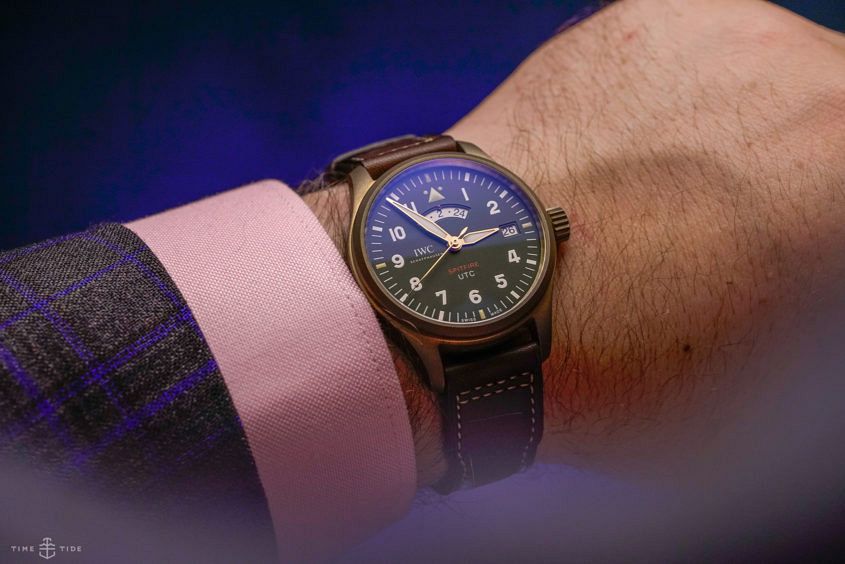 One of my highlights of SIHH every year is IWC – and not just because their booth is exceptional; this year it was dominated by an actual gleaming silver Spitfire. No, I like seeing IWC because the watches rarely disappoint, and this year was absolutely no exception. The Pilot’s collection is one of the brand’s iconic staples, and hugely popular in Australia (and, for that matter, around the world). And at SIHH it got some major new additions, mainly in the Spitfire and Top Gun sub families. Spitfire is the more retro of the two, and covered off the classics — a pitch-perfect 39mm automatic, a chronograph, a simpler Timezoner, a Big Pilot-cased perpetual and even a welcome return of the UTC. Now, while it’s easy to get caught up in the bronze cases and green dials on offer, for me the really big news is that the whole Spitfire family is now powered by in-house movements. Over in the Top Gun line, novel materials were the name of the game — with Ceratanium making an appearance on the Doppelchrono, and a gorgeous khaki ‘Mojave’ limited edition that I just can’t get out of my head. So, time to cue…
One of my highlights of SIHH every year is IWC – and not just because their booth is exceptional; this year it was dominated by an actual gleaming silver Spitfire. No, I like seeing IWC because the watches rarely disappoint, and this year was absolutely no exception. The Pilot’s collection is one of the brand’s iconic staples, and hugely popular in Australia (and, for that matter, around the world). And at SIHH it got some major new additions, mainly in the Spitfire and Top Gun sub families. Spitfire is the more retro of the two, and covered off the classics — a pitch-perfect 39mm automatic, a chronograph, a simpler Timezoner, a Big Pilot-cased perpetual and even a welcome return of the UTC. Now, while it’s easy to get caught up in the bronze cases and green dials on offer, for me the really big news is that the whole Spitfire family is now powered by in-house movements. Over in the Top Gun line, novel materials were the name of the game — with Ceratanium making an appearance on the Doppelchrono, and a gorgeous khaki ‘Mojave’ limited edition that I just can’t get out of my head. So, time to cue… When Montblanc gave us a privileged preview of its new Heritage collection in Miami back in October, our gut told us that they had a winner in the salmon-dialled Heritage Pulsograph. Forward three months to SIHH: 36 exhibiting brands and I-don’t-know-how-many-hundreds of new watches later, our opinion is, if anything, stronger than ever. With the Heritage Pulsograph’s immaculately judged balance of good looks, technical content, quality of execution and price, Montblanc has hit the nail on the head. First, let’s talk aesthetics: vintage-inspired watches have been a thing for some years now – and thanks to its head of watches, Davide Cerrato, Montblanc is a shining example of how to do it right. (Cerrato has previous form, as you may know, having harnessed Tudor’s archives to transform it from also-ran to super-cool brand half a decade ago.) At Montblanc, he has the rich archives of Minerva to draw on – and the Heritage Pulsograph is very similar to a 1940s Minerva monopusher chrono. But it’s no slavish copy. We were able to line up both watches together and, on the new model, the lines of the case and lugs are cleaner, the surfaces flatter, giving the whole watch a more contemporary…
When Montblanc gave us a privileged preview of its new Heritage collection in Miami back in October, our gut told us that they had a winner in the salmon-dialled Heritage Pulsograph. Forward three months to SIHH: 36 exhibiting brands and I-don’t-know-how-many-hundreds of new watches later, our opinion is, if anything, stronger than ever. With the Heritage Pulsograph’s immaculately judged balance of good looks, technical content, quality of execution and price, Montblanc has hit the nail on the head. First, let’s talk aesthetics: vintage-inspired watches have been a thing for some years now – and thanks to its head of watches, Davide Cerrato, Montblanc is a shining example of how to do it right. (Cerrato has previous form, as you may know, having harnessed Tudor’s archives to transform it from also-ran to super-cool brand half a decade ago.) At Montblanc, he has the rich archives of Minerva to draw on – and the Heritage Pulsograph is very similar to a 1940s Minerva monopusher chrono. But it’s no slavish copy. We were able to line up both watches together and, on the new model, the lines of the case and lugs are cleaner, the surfaces flatter, giving the whole watch a more contemporary…